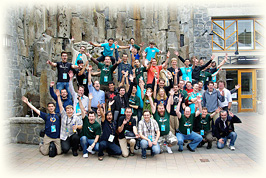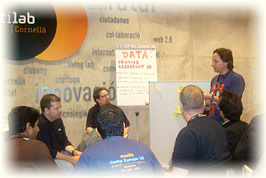Home > Four Stories > Part 3 The Power of Volunteers
-



Shiretoko peninsula extends beyond the area designated as a national park, which by itself is 38,633 hectares in size. There are limits to the resources of government agencies and the field teams of the Shiretoko Nature Foundation to protect such a vast natural area. For instance, the "Shiretoko National Park Nature Center," which is managed and operated by the Foundation as a hub for activities to conserve nature and to let people know about the Shiretoko World Heritage Site, is one of the most popular facilities in the area, visited by half a million people since opening five years ago.
In addition to operating such facilities, there are mountains of work to be done, such as managing the park, patrolling and running research studies, but not nearly enough staff to handle it. It was none other than the power of volunteers that came to the rescue.
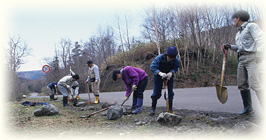
"We love the natural beauty of Shiretoko," said the volunteers who came from around the country at their own expense to live together in simple accommodations and work for the conservation of the Shiretoko wilderness. During the first ten years, more than 500 people helped out in this way each year.
What was remarkable about the volunteers who came together in this way was that they did not simply do what they were told, but each took initiative to find something they could do to make a difference. The shared passion of the Foundation and the volunteers was the driving force to conserve Shiretoko.


The activities of the volunteers are truly wide-ranging.
Forest regeneration activities involve different kinds of work throughout the seasons, such as transplanting saplings and weeding. They provide a "roll up your sleeves" experience of nature conservation in Shiretoko.
Activities to raise awareness about nature and conservation in Shiretoko are also among those supported by volunteers.
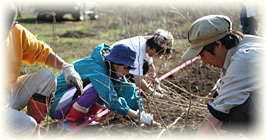
Volunteers tried to help people understand that feeding wild animals such as red foxes and brown bears brings unfortunate results both to humans and to animals, and to explain why it is necessary to regenerate forests in Shiretoko. They not only gave lectures but also prepared picture-story shows and countless other teaching materials on these issues.
Some of the picture-story shows, prepared with deep feeling by volunteers who cherish and wish to protect nature in Shiretoko, were later published as picture books, which have been handed down with loving care to this day.
Furthermore, efforts to organize tours led by nature guides would not have been possible without the support of volunteers. These tours created a new trend: "tourists to invest in protecting and enjoying nature," something rather unfamiliar in Japan up to then.
The partnership of Shiretoko Nature Foundation and volunteers, joined by a shared passion "to do something for nature in Shiretoko," celebrated its 20th anniversary in 2008.
-



Firefox 1.0 exceeded 10 million downloads within about a month from its release in 2004. This powerful browser was developed by people spurred on by their intellectual curiousity - the desire to "try something cool."
In fact, famous engineers who are leaders in their fields also joined the Mozilla Firefox initiative. Concerned about the near monopoly of one company's browser causing stagnation in technical innovation, among other reasons, people thinking seriously about the future of the web joined the project hoping to guide the evolution of web technology to the next level.
The wish to help keep the world wide web open as a global commons for humanity had a ripple effect, as engineers who normally write programs at their job as well as students and people with no prior programming experience joined the Mozilla project. They hotly debated their ideas about the web of the future and worked to make their dreams come true.
This community was incredibly fast in finding security issues and bugs, normally a very lengthly process, as well as in fixing the problems. This further improved people's regard for Firefox.
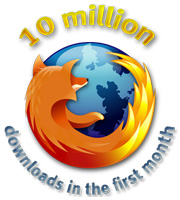

Not only the core product development of Firefox, but also many related activities are supported by volunteers. People with a common wish have gotten together to form many communities.
The activities of the Mozilla communities span a wide spectrum, ranging from interface design, which determines users' impressions of the browser, to making icons and translating documentation for local language versions, as well as awareness-raising activities. It is remarkable that almost all of these activities are carried out at the initiative of people who each find something they can do to make a difference for Mozilla, Firefox and the web.
For example, Firefox 3.5, developed under the codename "Shiretoko" and released in July 2009, was available in more than 70 different languages. People's wishes to be able to immediately use the new Firefox in their mother tongues became a driving force for them to develop local language versions of Firefox. Even after release, local language versions will continue to proliferate at a pace unthinkable for a single company.
The movement that led to the birth of Firefox - a bond of friendship between people who wish "to do something for the open web" - celebrated its 10th anniversary in 2008.






